|
Your monthly guide to staff training outside the box
Eyes / Lenses / Fitting Lenses / Free-Form / Frames / Sunwear / Patient Solutions / In-office / Standards
FRAMES: Material, Style and Design
LOW BRIDGE AND HIGH CHEEKBONES
In the dispensary, there are challenges when selecting eyewear for a patient with a low bridge and high cheekbones. Those with high cheekbones coupled with a low and narrow, or a low and wide bridge, tend to wear their eyeglass frames resting on the cheekbones. They slip continuously. When the frame doesn’t fit the nose, the temples bow out.
Accommodating the bridgeless typically requires decreasing the pantoscopic tilt (from about 8 degrees to less when viewing the frame from the side), or by flattening the frame front. These changes affect the aesthetics of the frame as well as the viewing area of the lens. Not only does an improperly fitted frame leave marks on the bridge and cheekbones, but the patient ends up not viewing out of the proper area of the frame.
—Maryann Santos
See Plus »
|
DESIGN
By Mike Hundert and Nicolas Roseillier
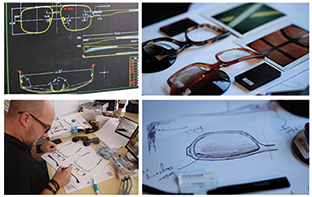 The design process is collaboration between designers and factory engineers to ultimately create the CAD drawings that lead to manufacturing. The designer is an artist that draws inspiration from culture and practicality. Combining cues from the fashion world with the wisdom of optical experience builds a high quality frame that will enhance a consumer’s experience.
The design process is collaboration between designers and factory engineers to ultimately create the CAD drawings that lead to manufacturing. The designer is an artist that draws inspiration from culture and practicality. Combining cues from the fashion world with the wisdom of optical experience builds a high quality frame that will enhance a consumer’s experience.
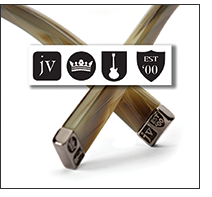 The designer begins by establishing the foundation based on the brand’s following and its consumer demographics, including age, income and lifestyle considerations. Technically, both design and engineering examine shape and form. They look for details such as the sharpness of angles that may make an acetate frame provocative on paper but difficult to achieve since standard “tumbling” that is used to give frames their luster rounds off edges and may destroy the designer’s intent. The more successful models that fit a wider variety of faces are alanced, i.e., neither too “wingy” nor too “sad.”
The designer begins by establishing the foundation based on the brand’s following and its consumer demographics, including age, income and lifestyle considerations. Technically, both design and engineering examine shape and form. They look for details such as the sharpness of angles that may make an acetate frame provocative on paper but difficult to achieve since standard “tumbling” that is used to give frames their luster rounds off edges and may destroy the designer’s intent. The more successful models that fit a wider variety of faces are alanced, i.e., neither too “wingy” nor too “sad.”
A designer usually creates some characteristics that are used consistently from model to model, weaving a cohesive story that brings a common identity to each style in a collection. Take the temple example from the John Varvatos Collection. Each of its temples are capped-off with a metal piece that carries the brand’s iconic symbols.
See Plus »
|
|


|
KIDS, IT’S ALL ABOUT THE FRAME
By Mark Mattison-Shupnick, ABOM
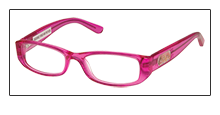
Kids love color, and that helps them choose the frame they WANT to wear. When kids want to wear their glasses, mom is happy, and the reason that they were prescribed glasses is fulfilled. Acetate is the solution for all those great colors, textures and combinations of design.
Next is fit, if the frame is uncomfortable, kids won’t wear them. Therefore, consider that every frame is supplied with spring hinges for easier fitting, and they’ll take a kid’s everyday bumps, yet return to the right fitting position. For metal frames, adjustable nosepads ensure that the pads can match the shape of a developing nose.
Lastly, in each frame, there’s more than a hint of adult design. In this way, modern trends like flat metals are delivered in a combination style, suggesting a CatEye shape that is prescription-friendly, produced with a soft corner so that resulting prescriptions aren’t overly thick.
See Plus »
|
RIMLESS ADVANTAGES: Leveraging Rimless to Differentiate Your Practice
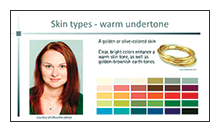
By Kristi Green, MS, ABOM, FCLSA
Misconceptions of rimless eyewear can mistakenly lead to avoidance. However, a thorough knowledge of the advantages of rimless eyewear benefits both practices and patients. A better understanding of rimless eyewear, high-quality frames and optimum lens materials can generate profits and set you and your office apart from the rest.
See Plus »
|
COMING UP AROUND THE BEND: MONOBROWLINES
By Preston Fassel, BS
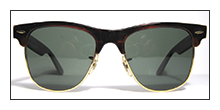
Earlier in 2014, I wrote a column about my dispensary’s success with a particular frame—the Snake Eyes from ClearVision’s Marc Ecko line—and how I speculated that it could become a sort of generational optical hallmark, the way that Art Craft’s Clubman frame was more or less the spokesman for browlines in the 1950s. After all, for as much of a vintage styling enthusiast as I am, I have to admit that classics need—if not necessarily reinvention—then revitalization every few generations in order to remain relevant, and as the optical world is currently in the midst of a browline renaissance, good sense called for a subtle tweak to the formula in order to keep things fresh. A new style currently picking up steam across the optisphere—the Monobrowline.
See Plus »
|
QUICK REFERENCE—FRAME MATERIALS
Frame materials change the way your patient and their glasses look. For many opticians, describing frame style and material are often more difficult than talking the technical terms used for lenses. However, being able to differentiate materials and tell patients about style and fashion separates you from the competition. Your patients will describe their frames the way that you do. In fact, to be the most successful optician, combine the most successful attributes of a stylist.
See Plus »
|
|